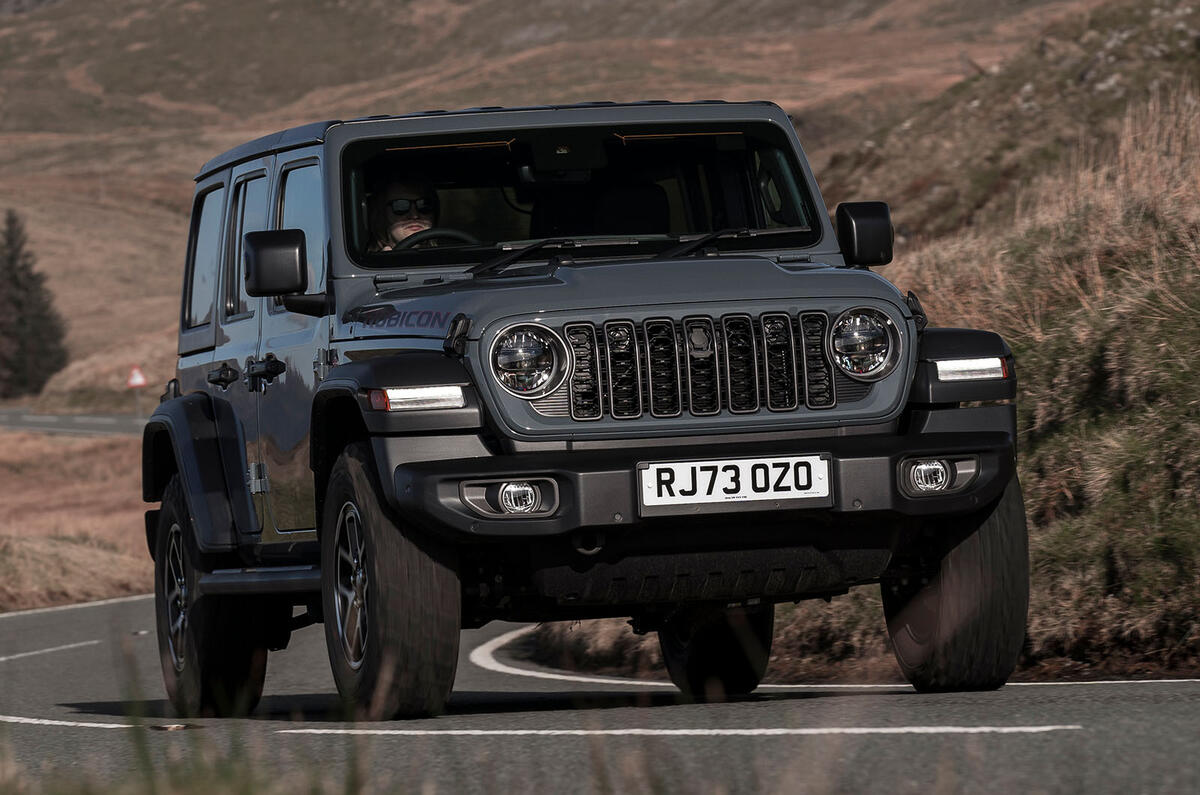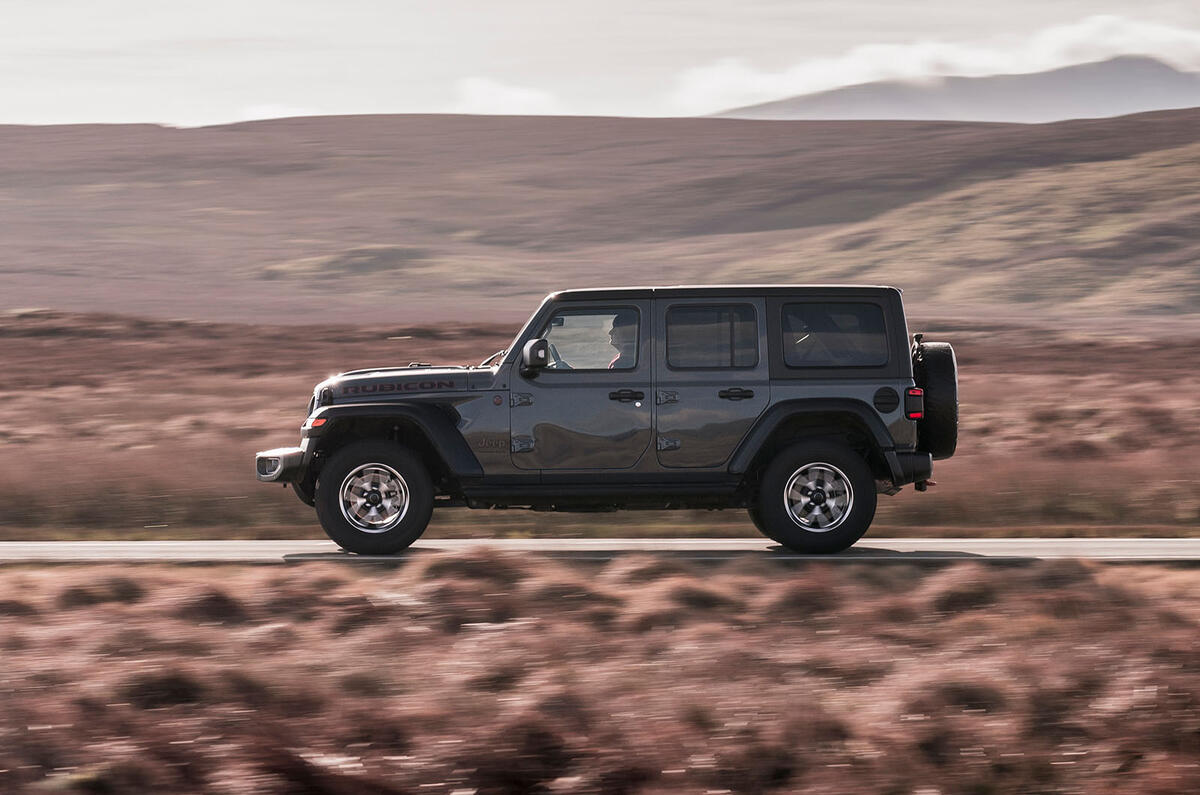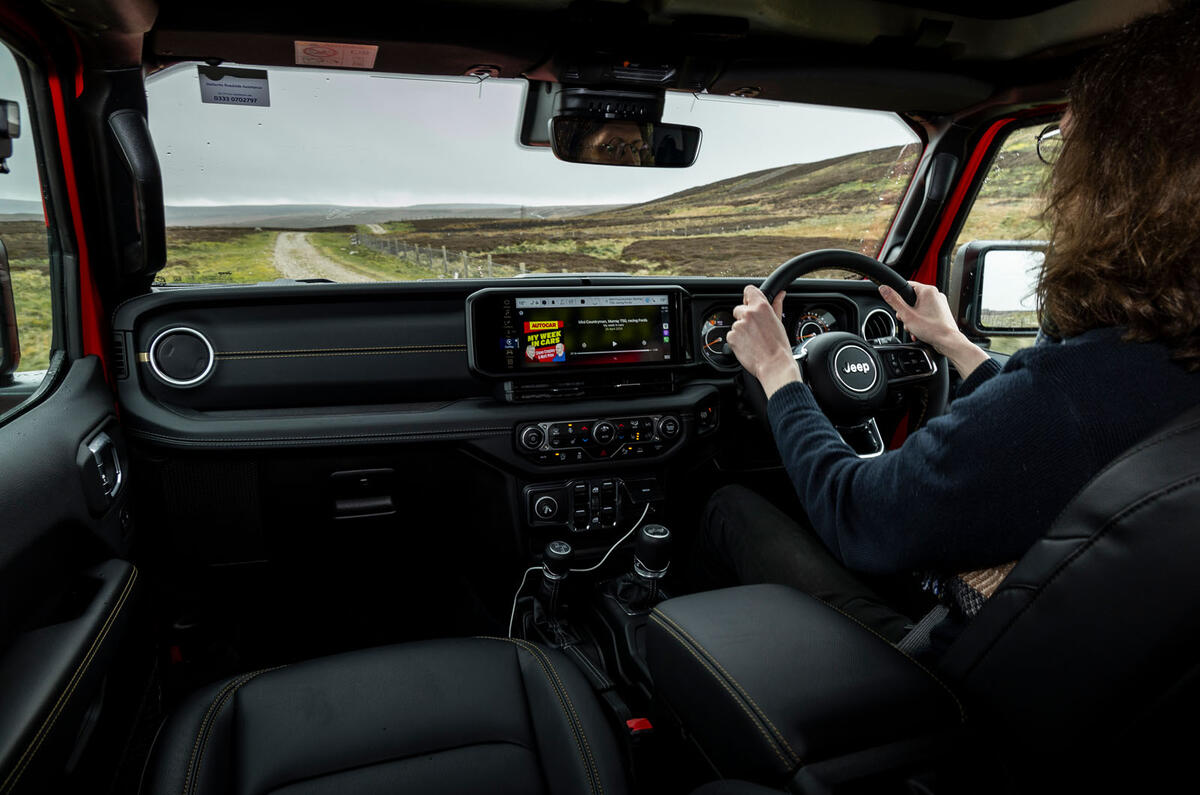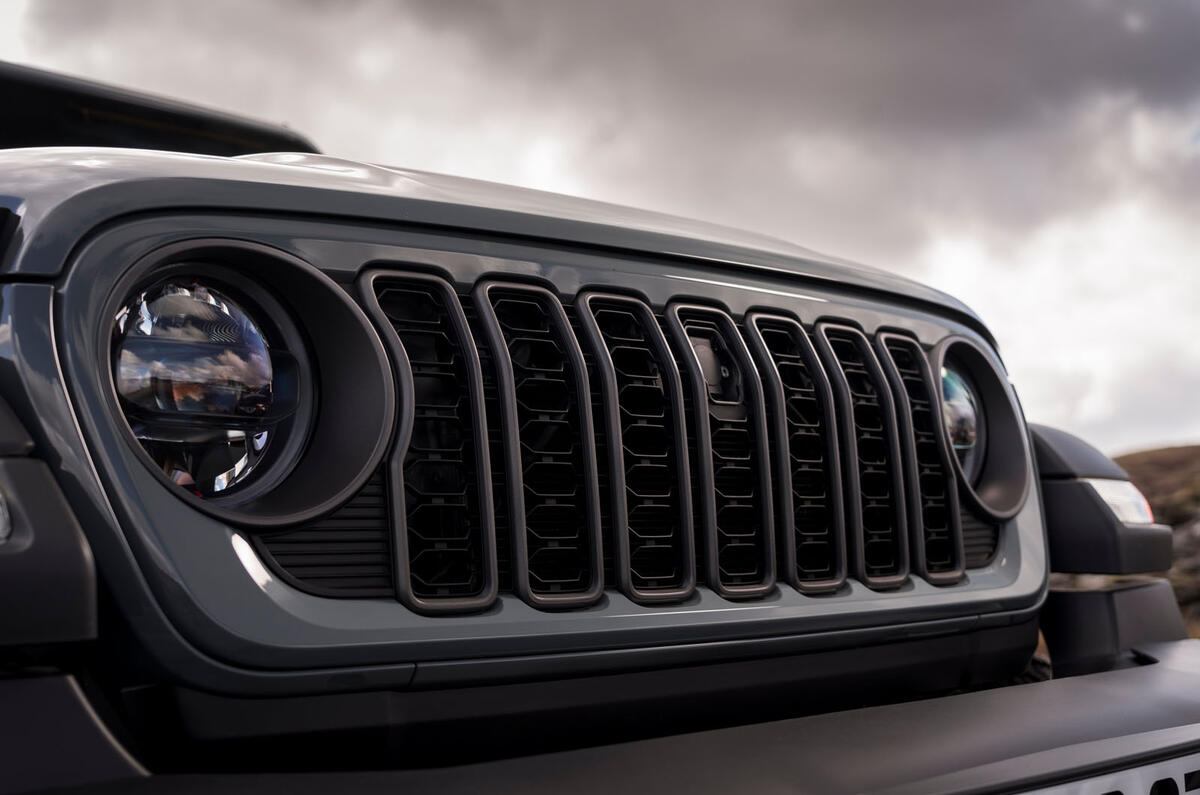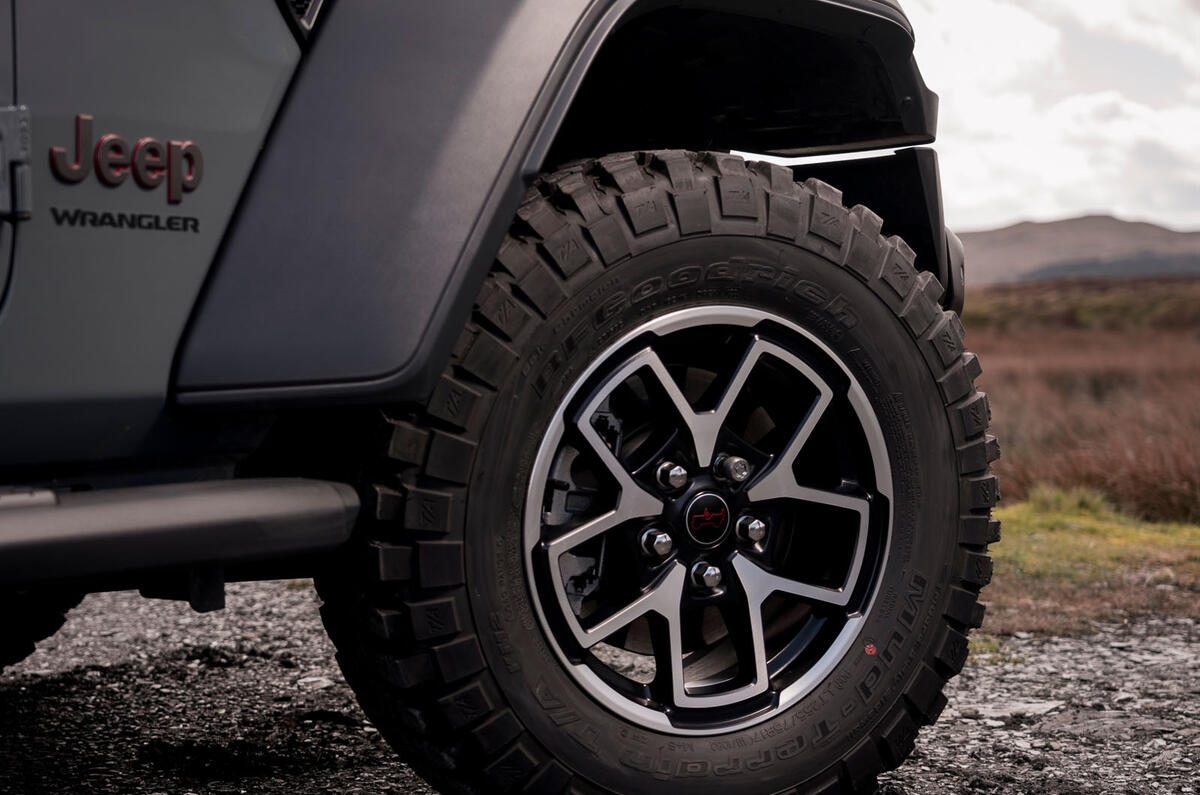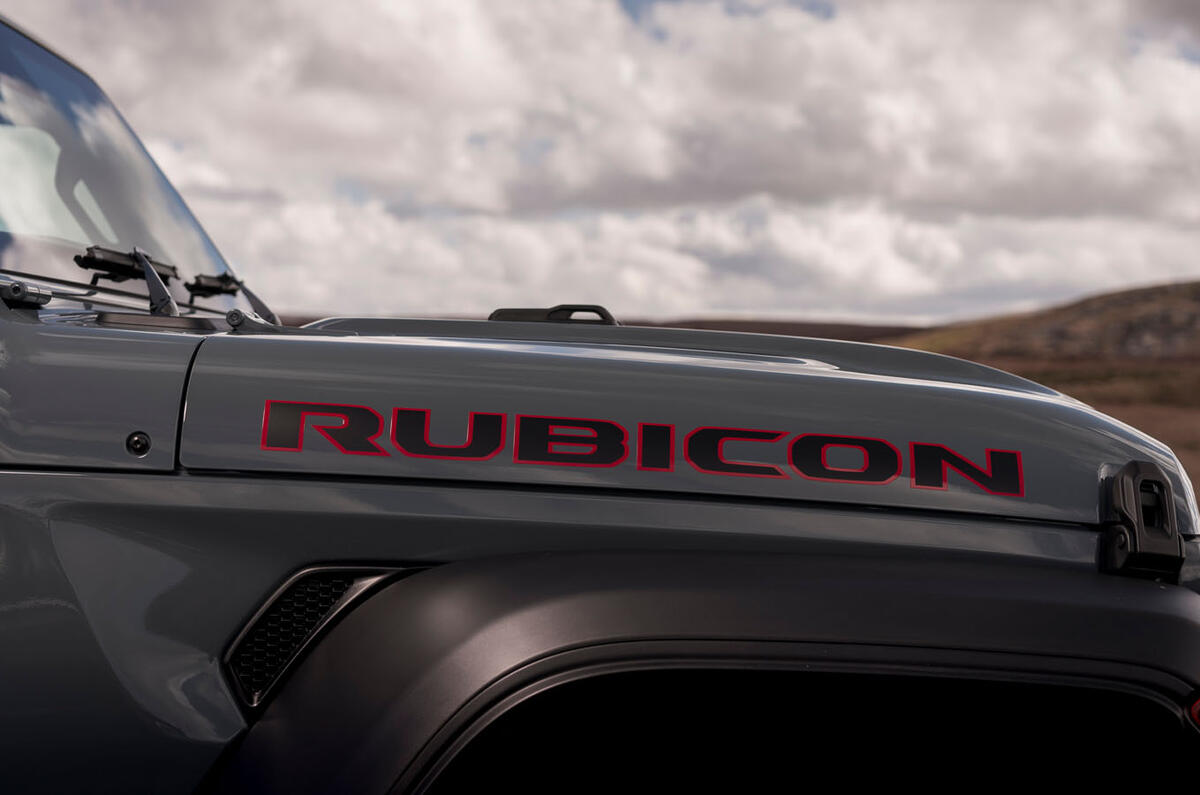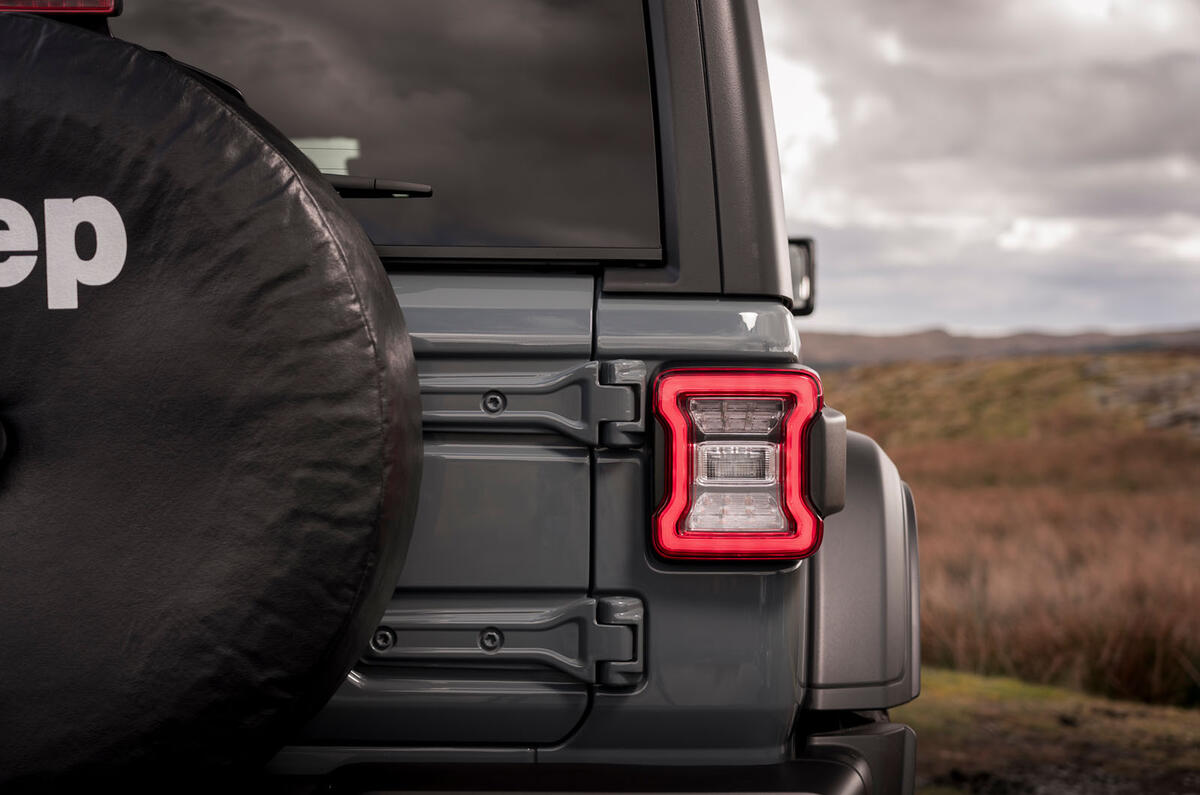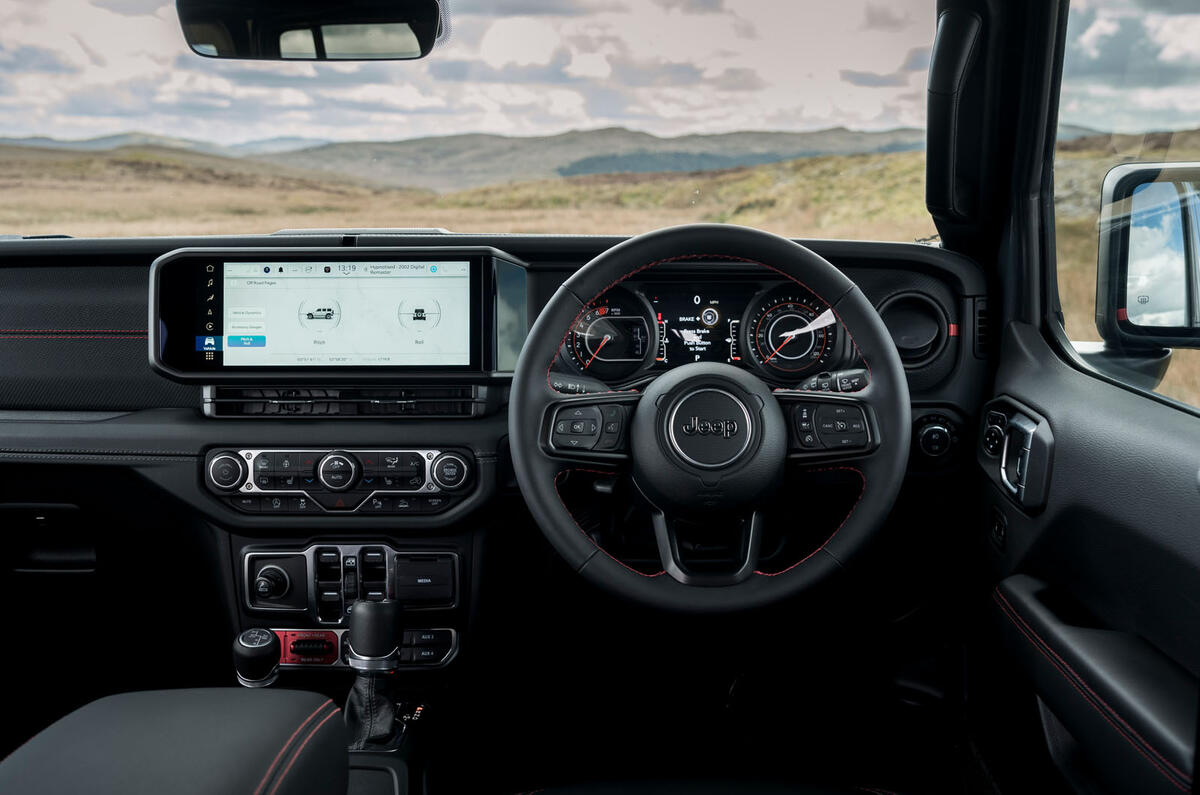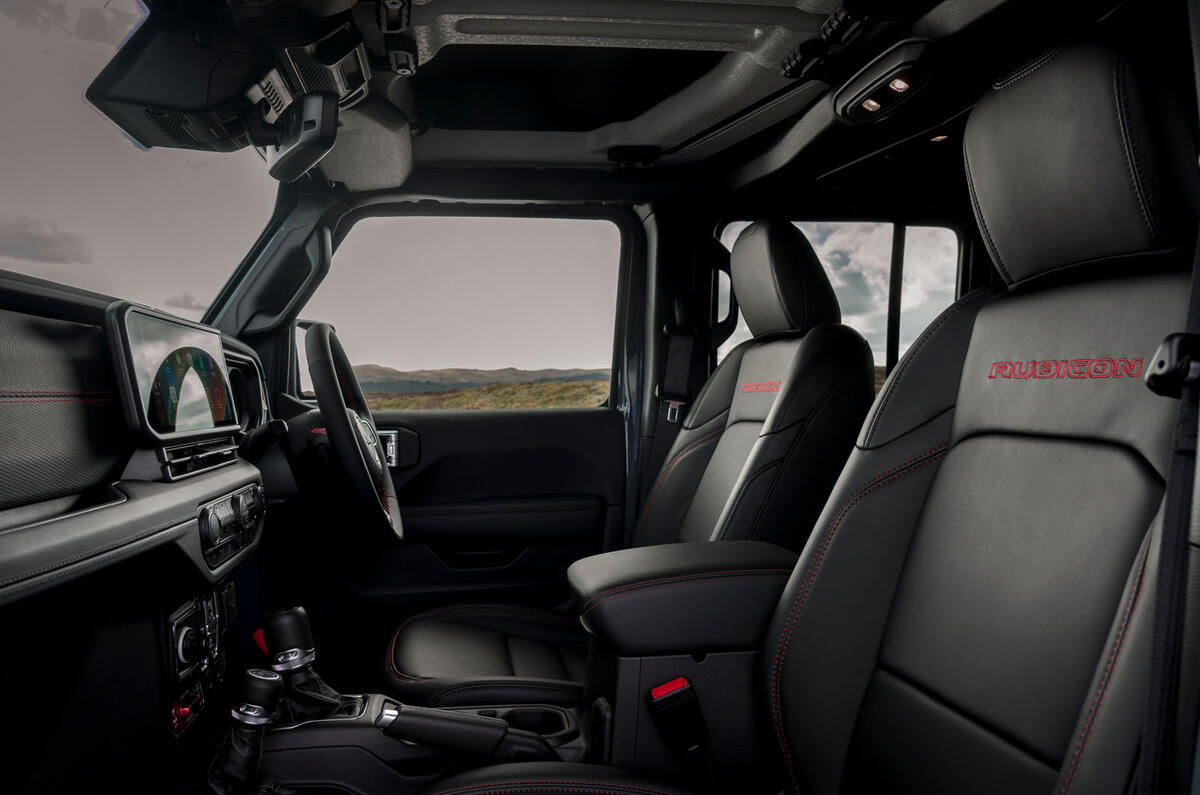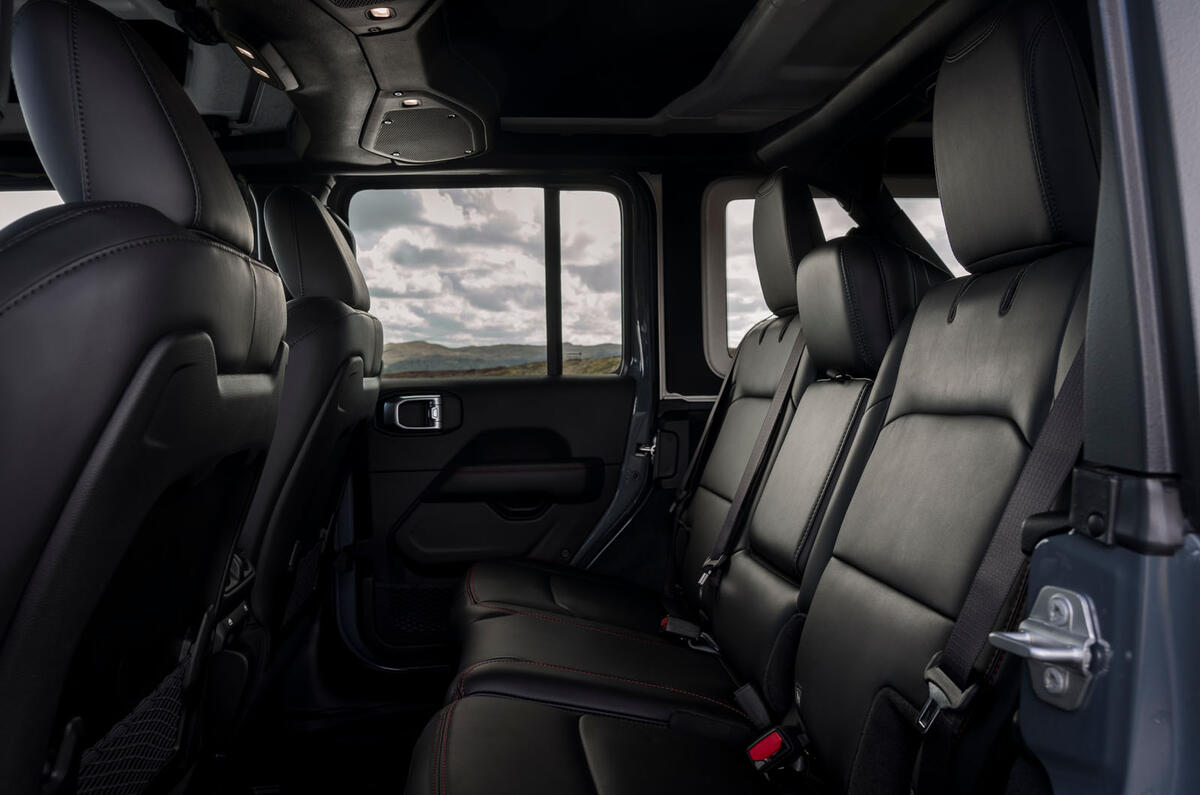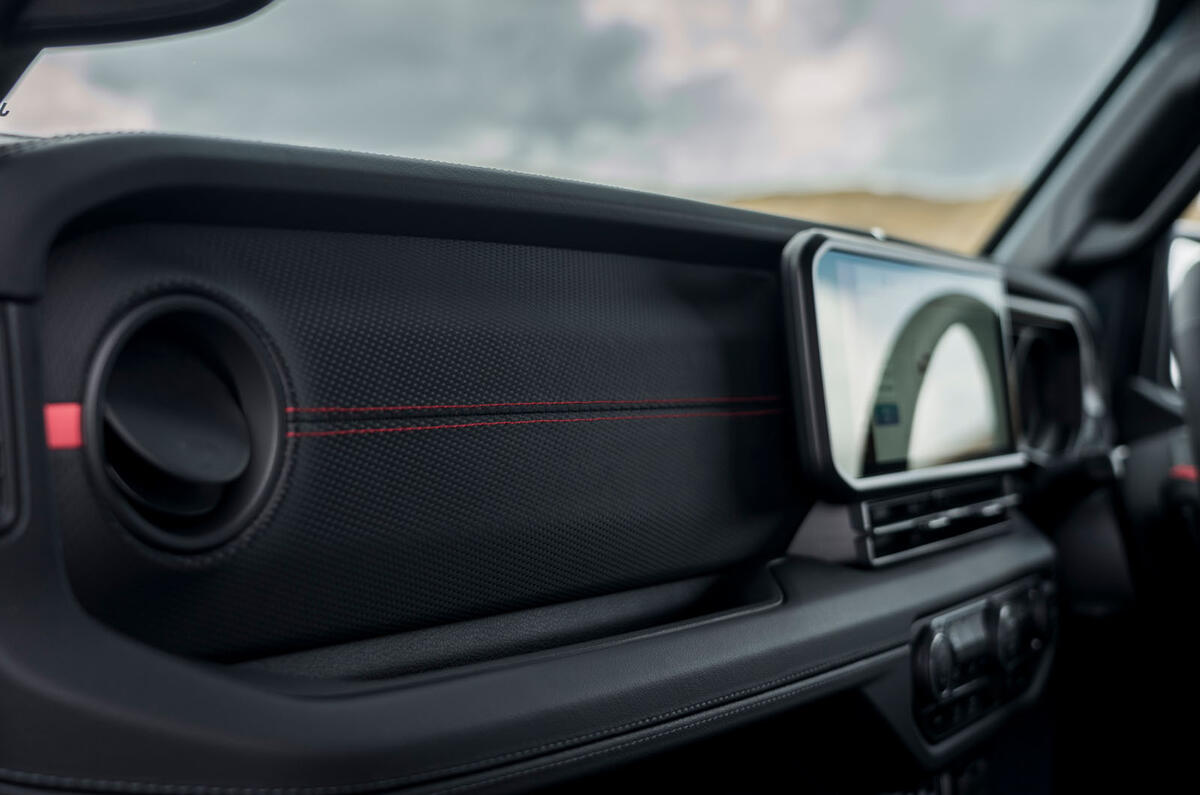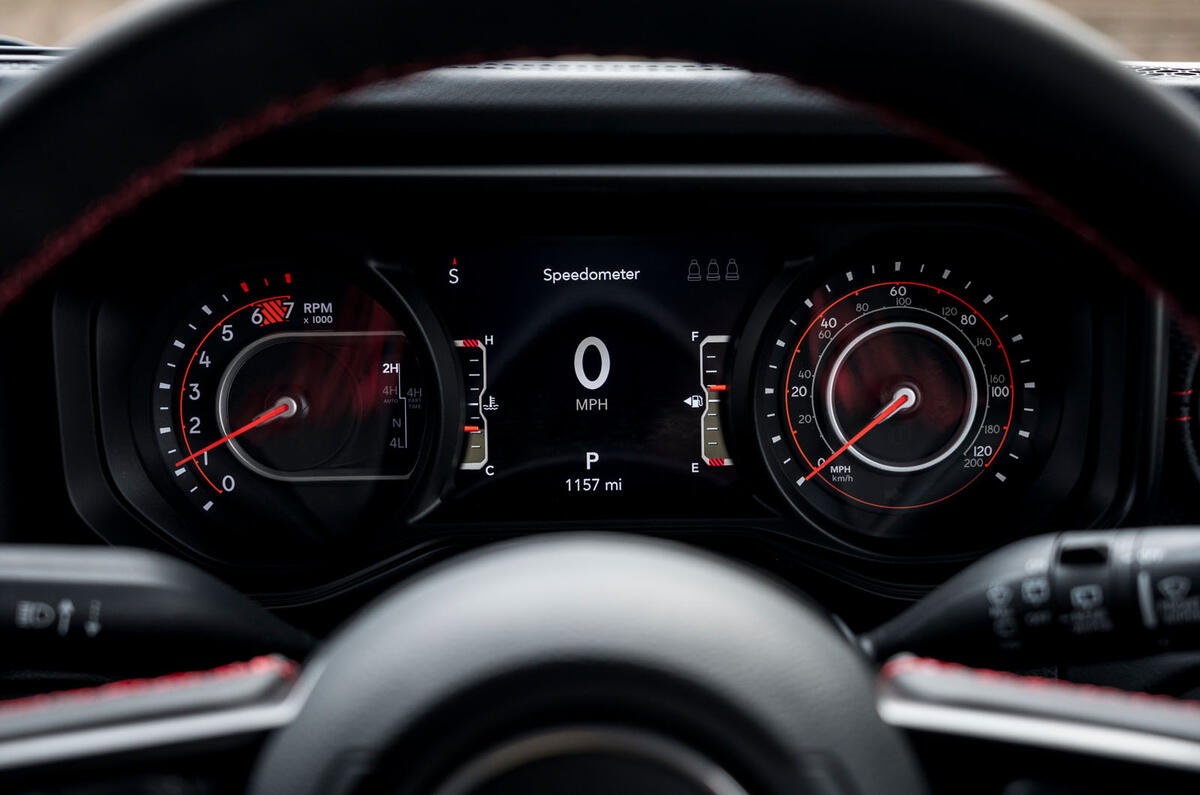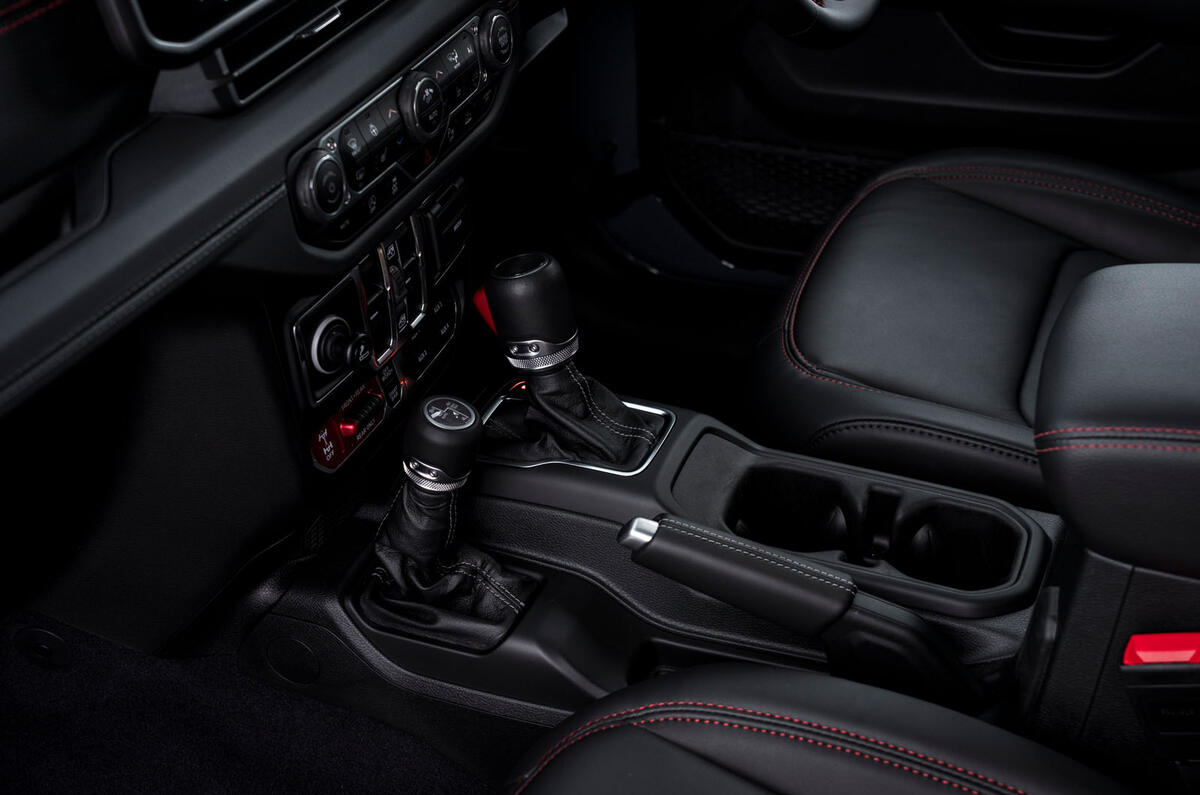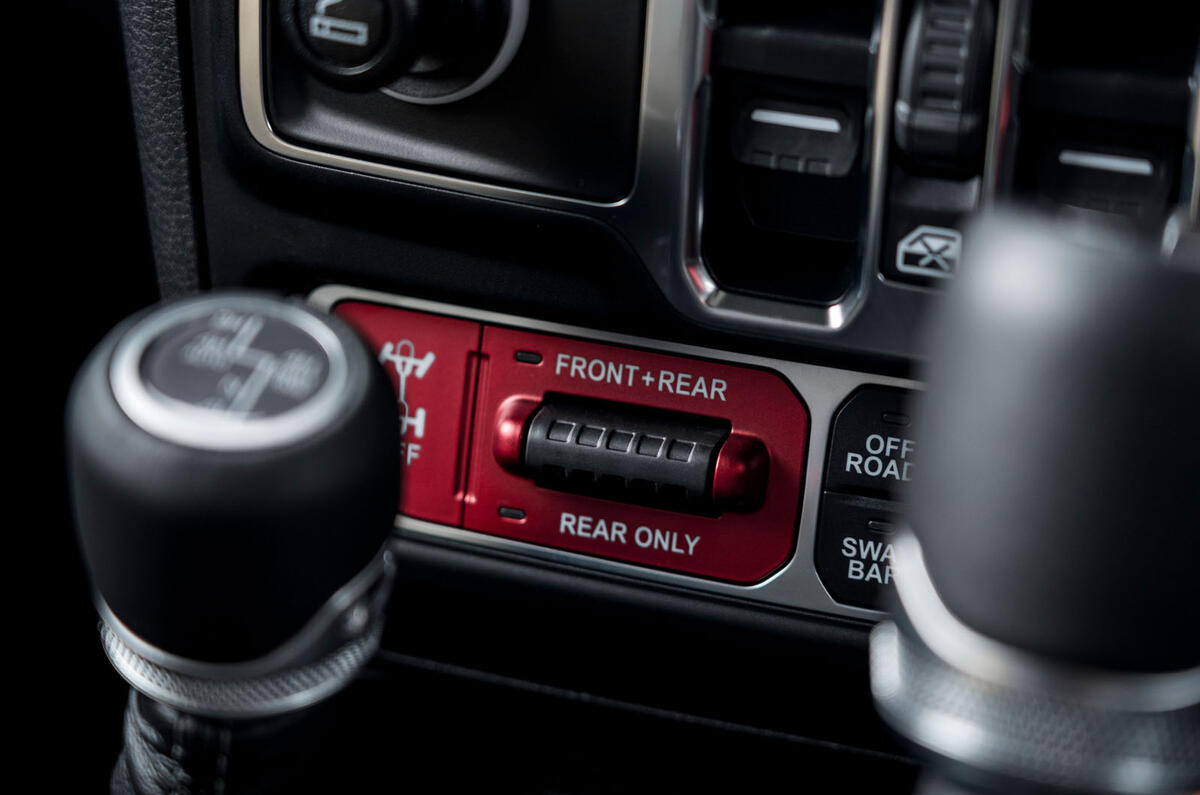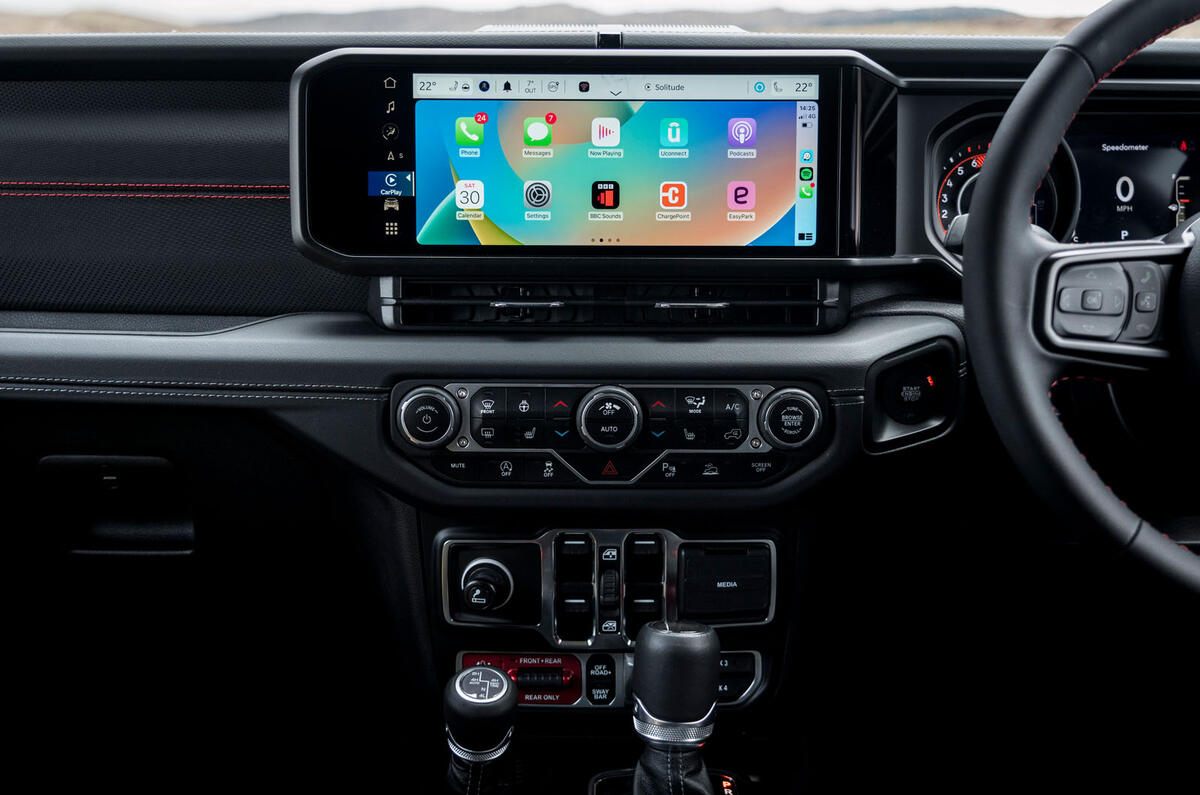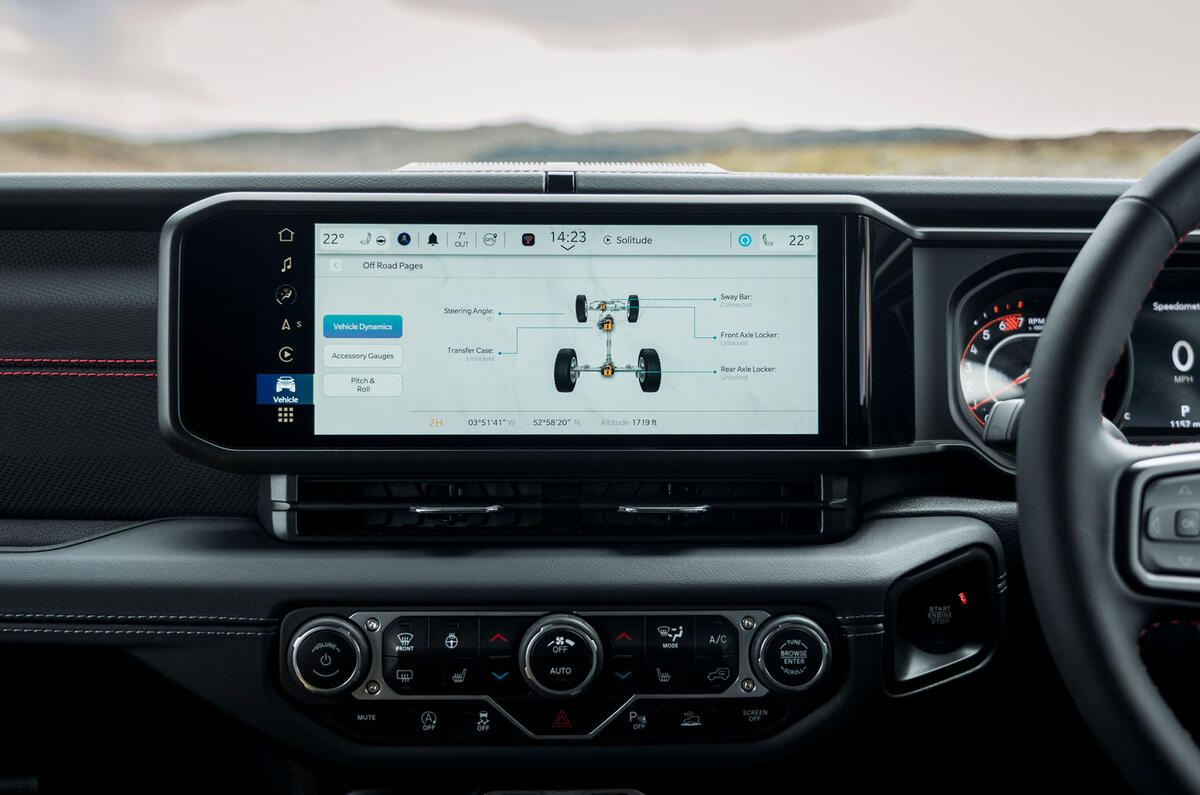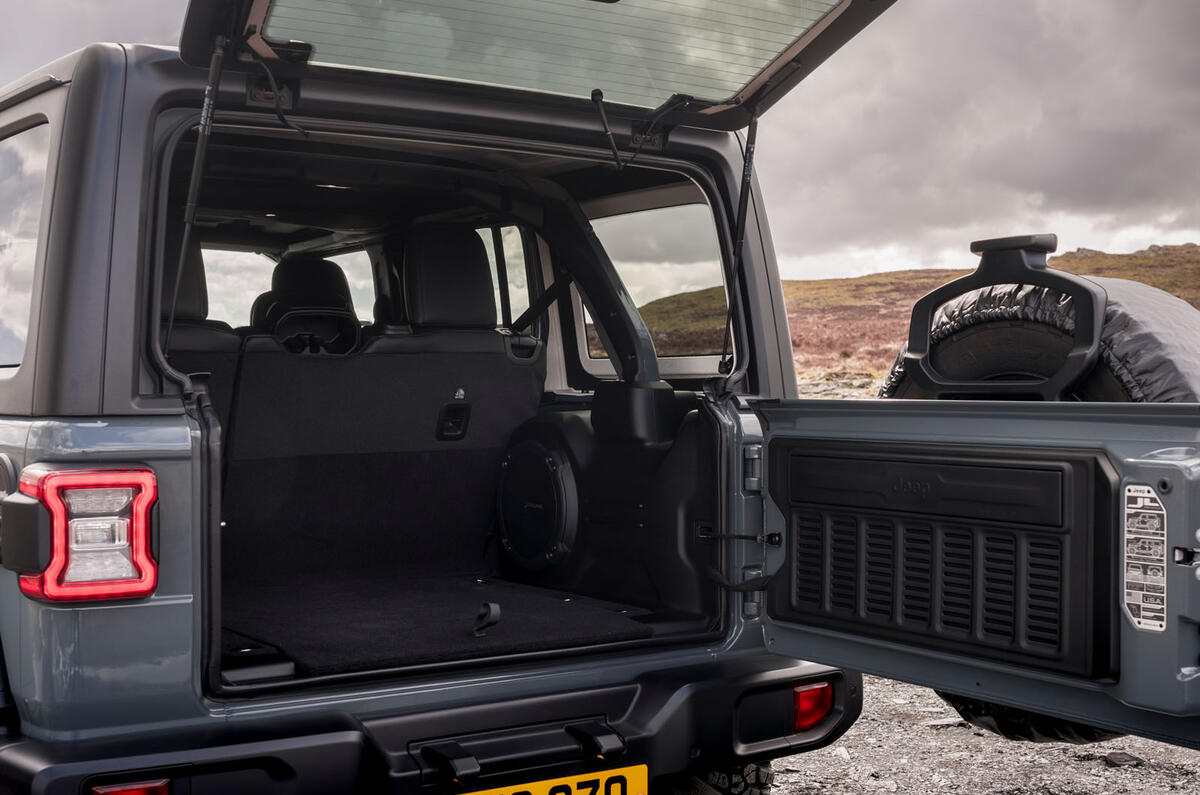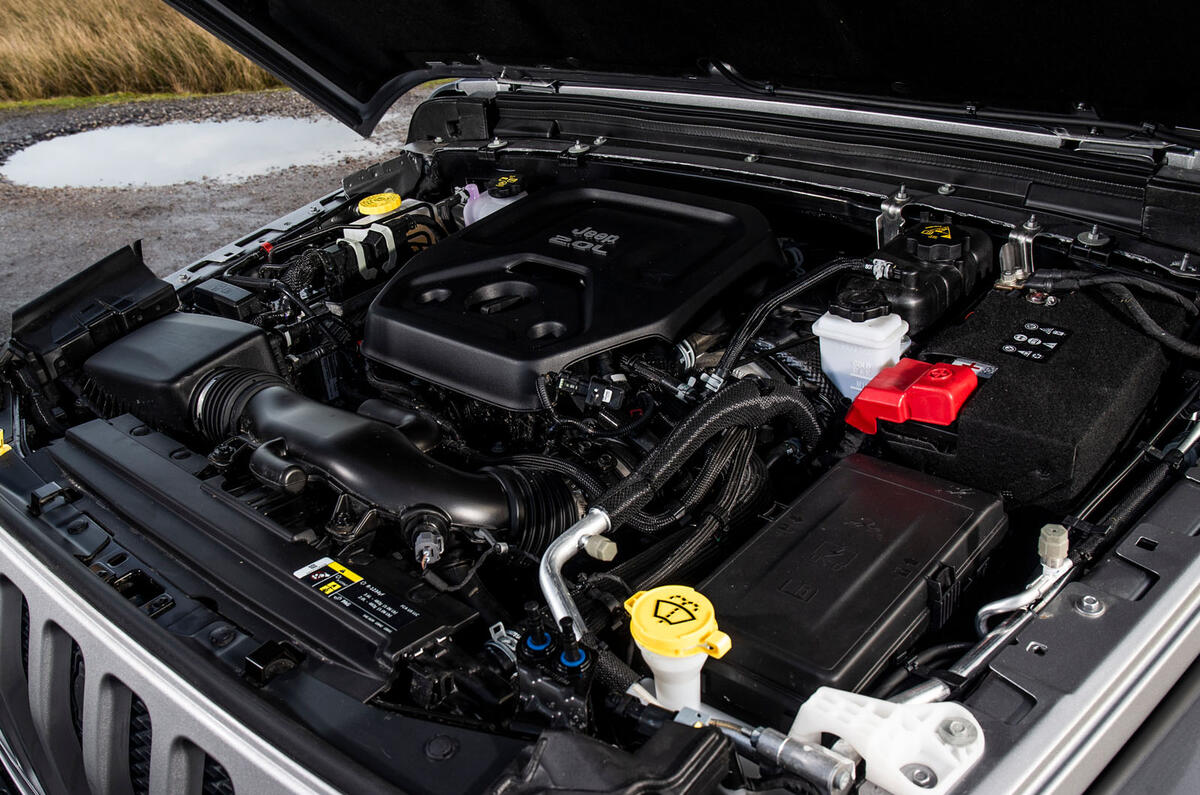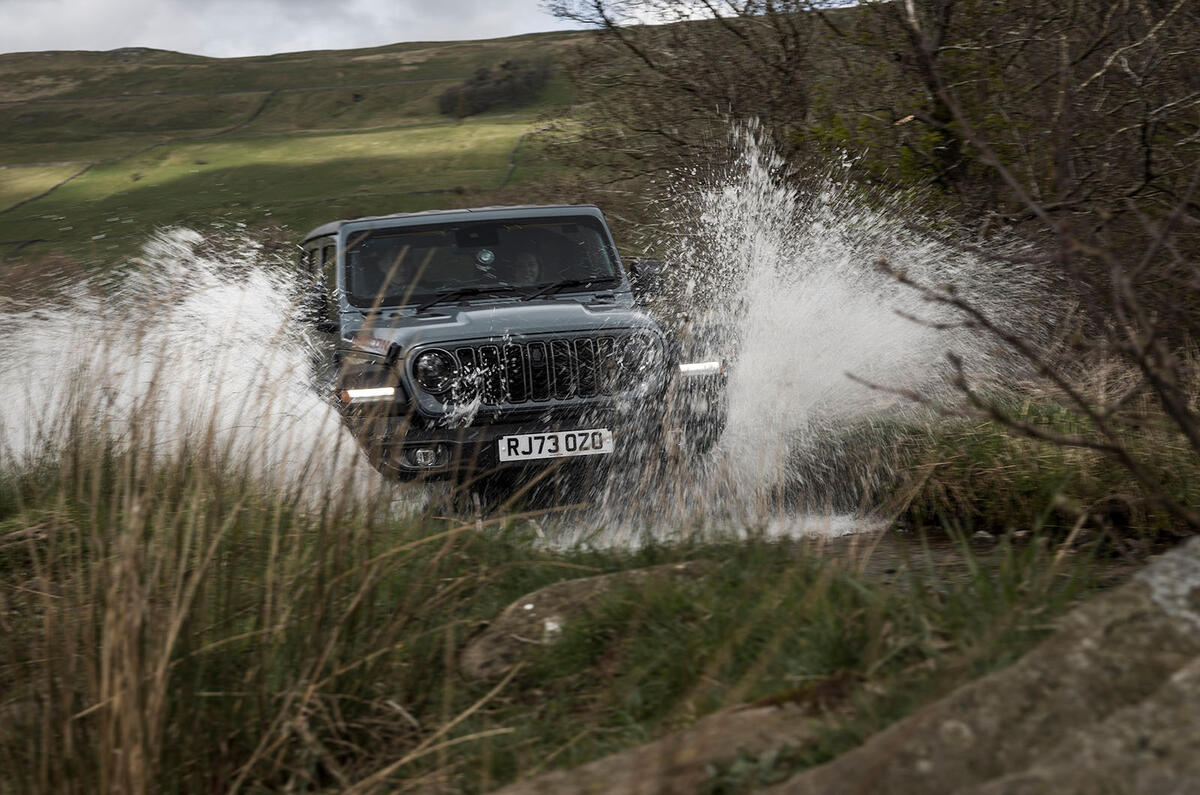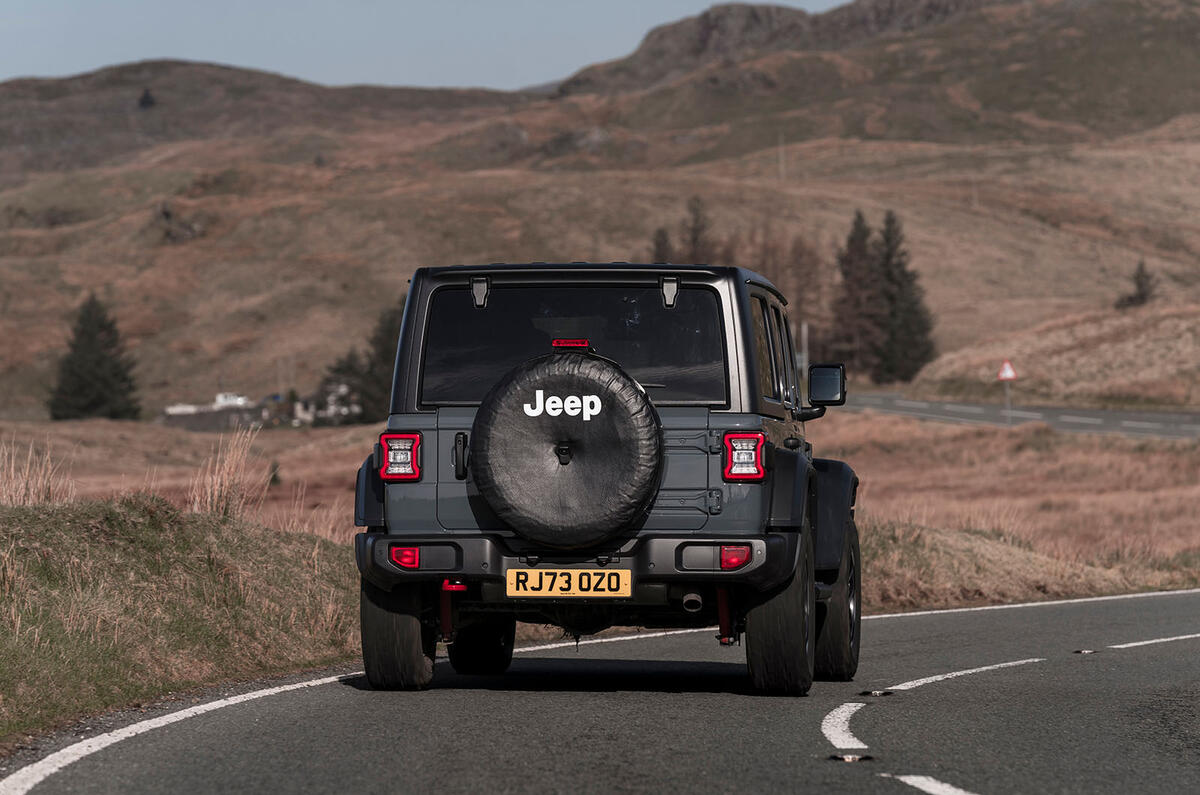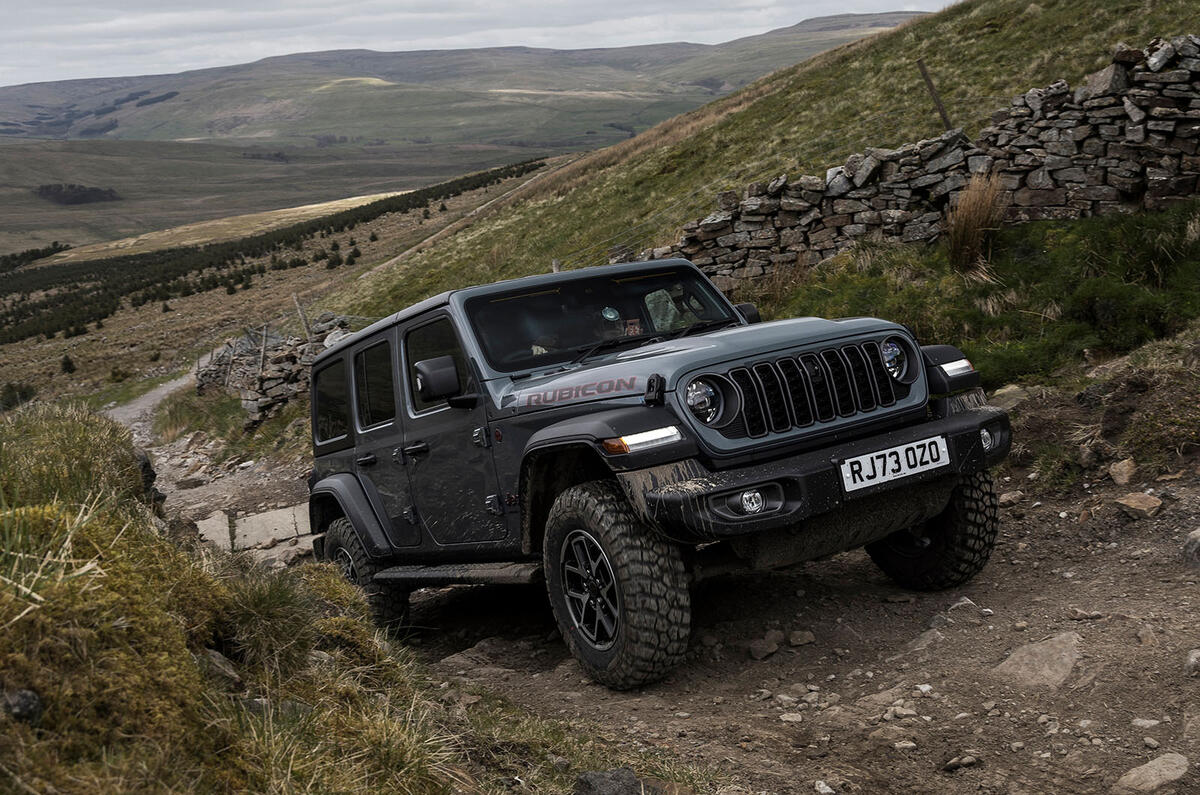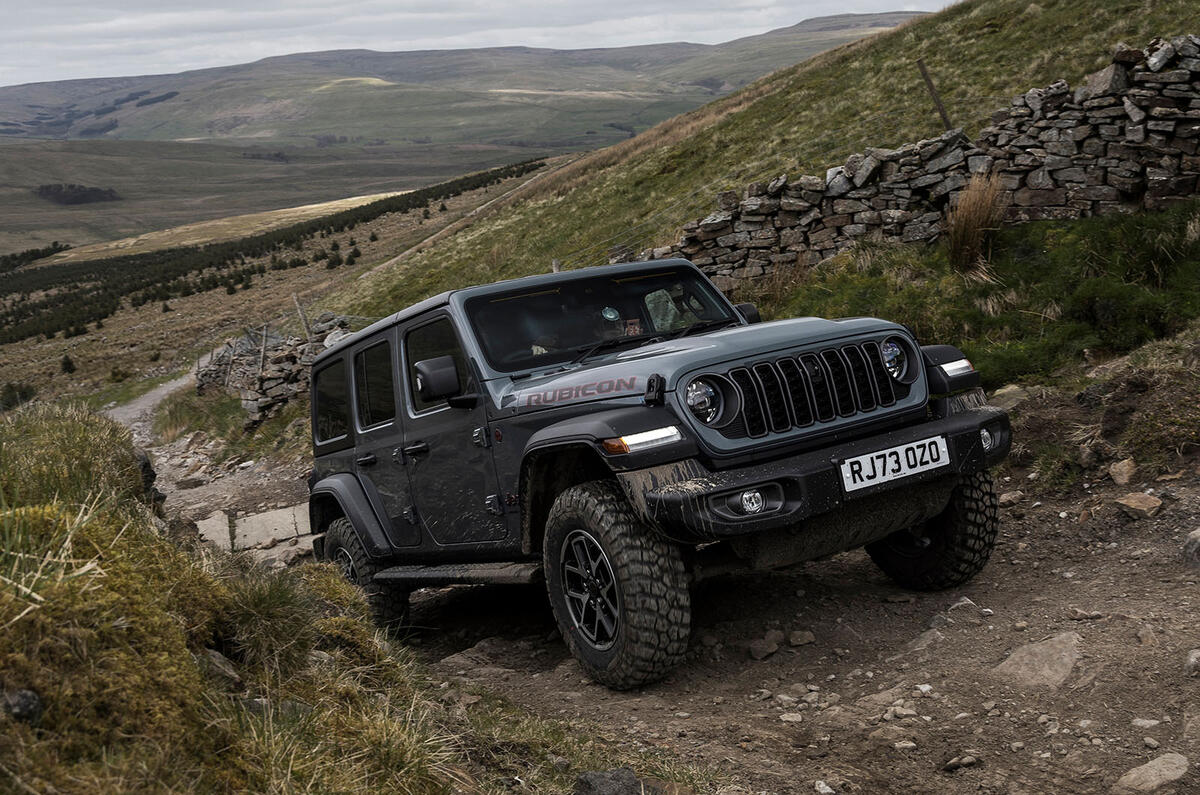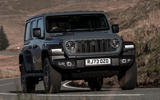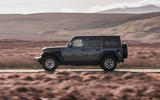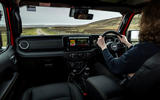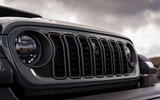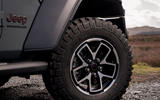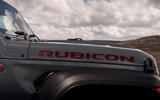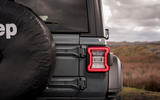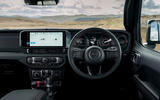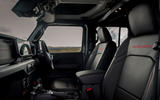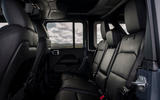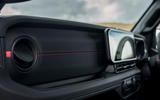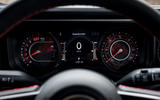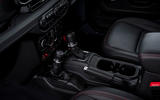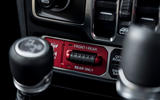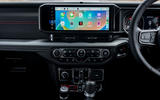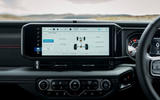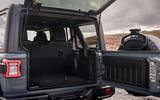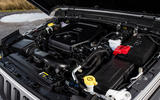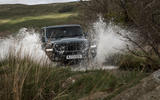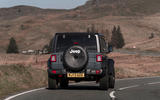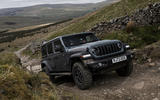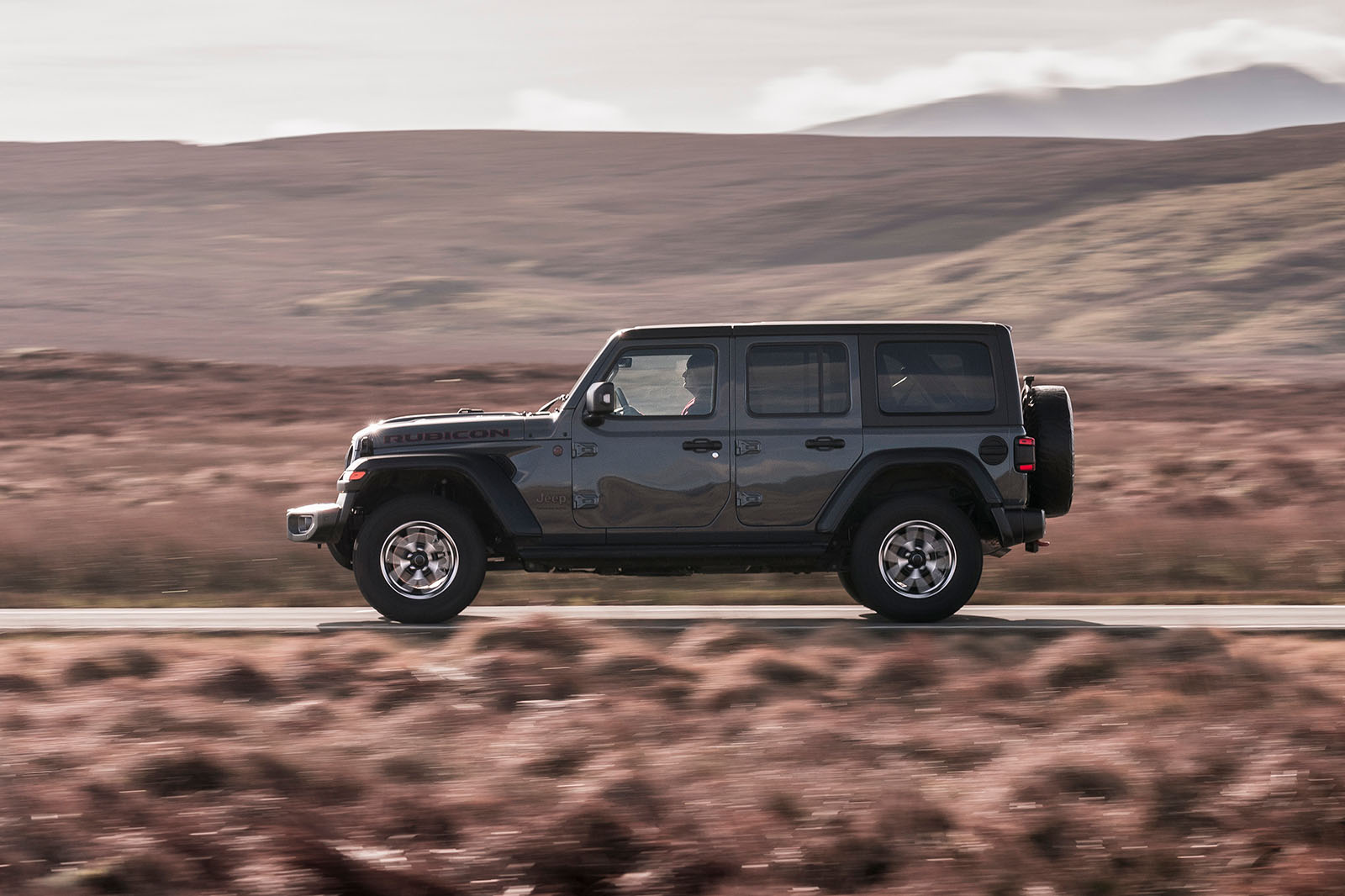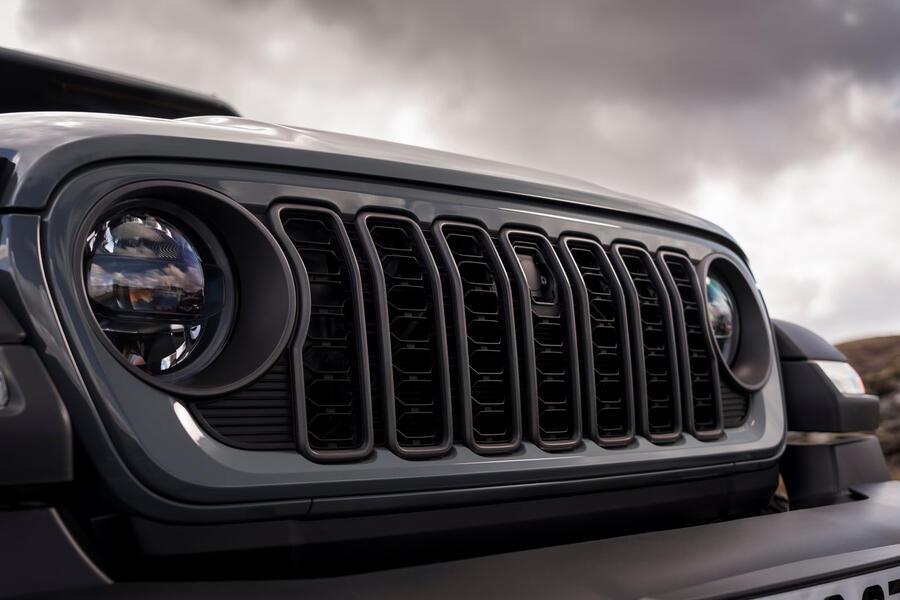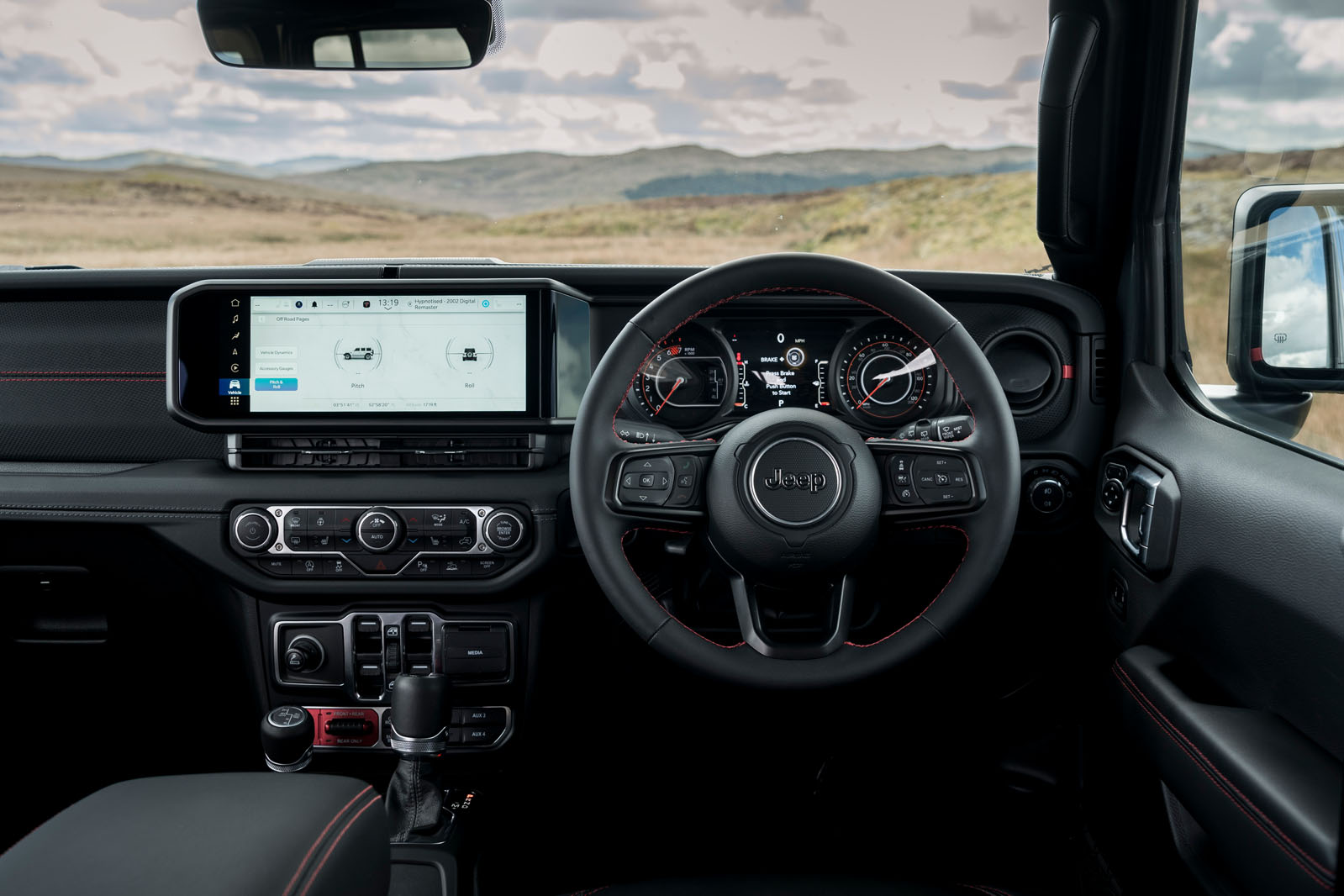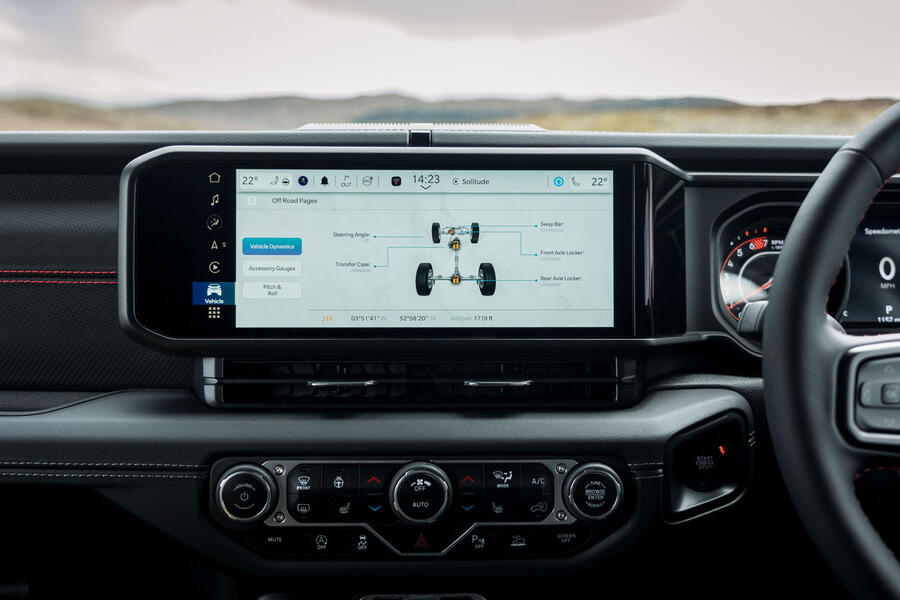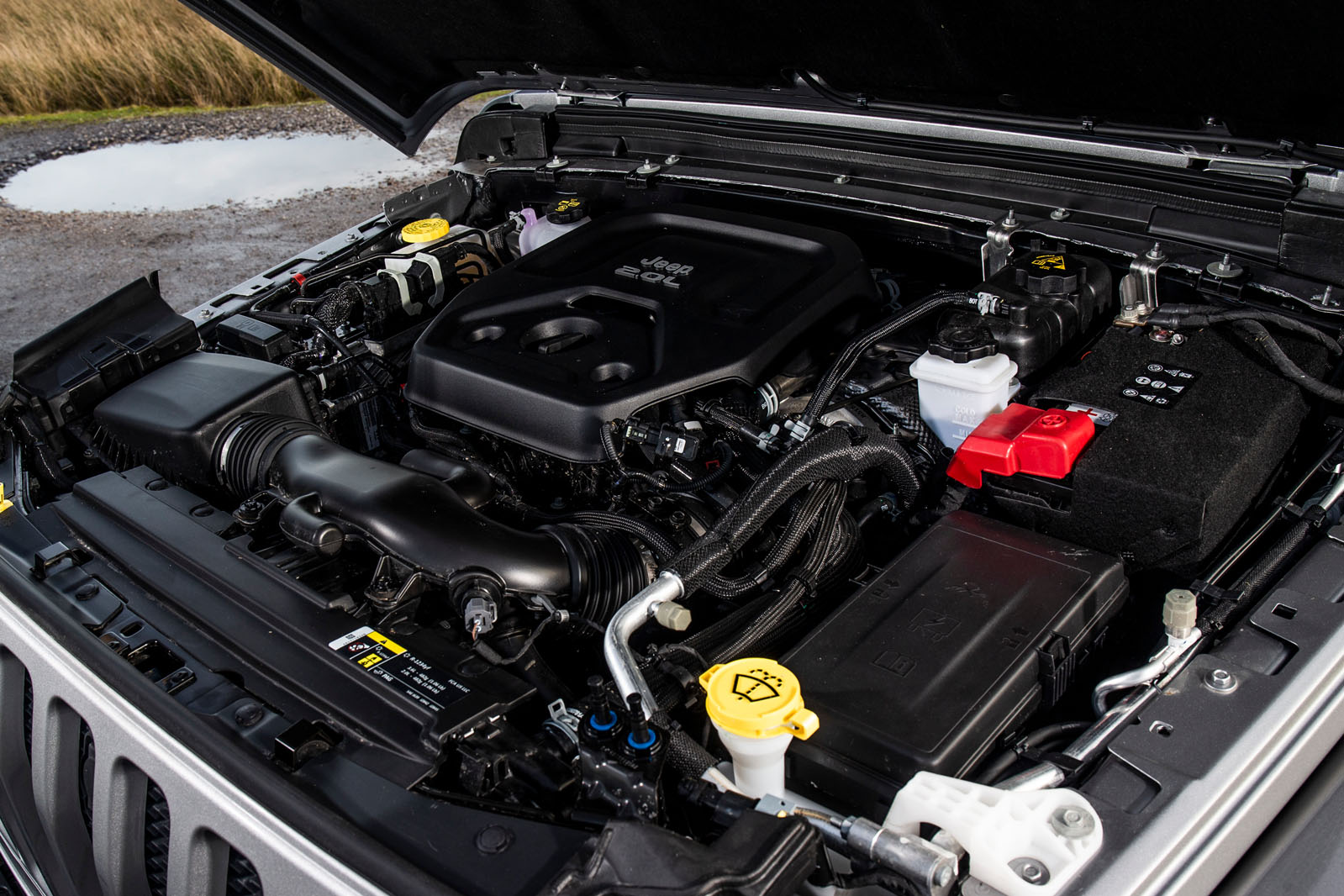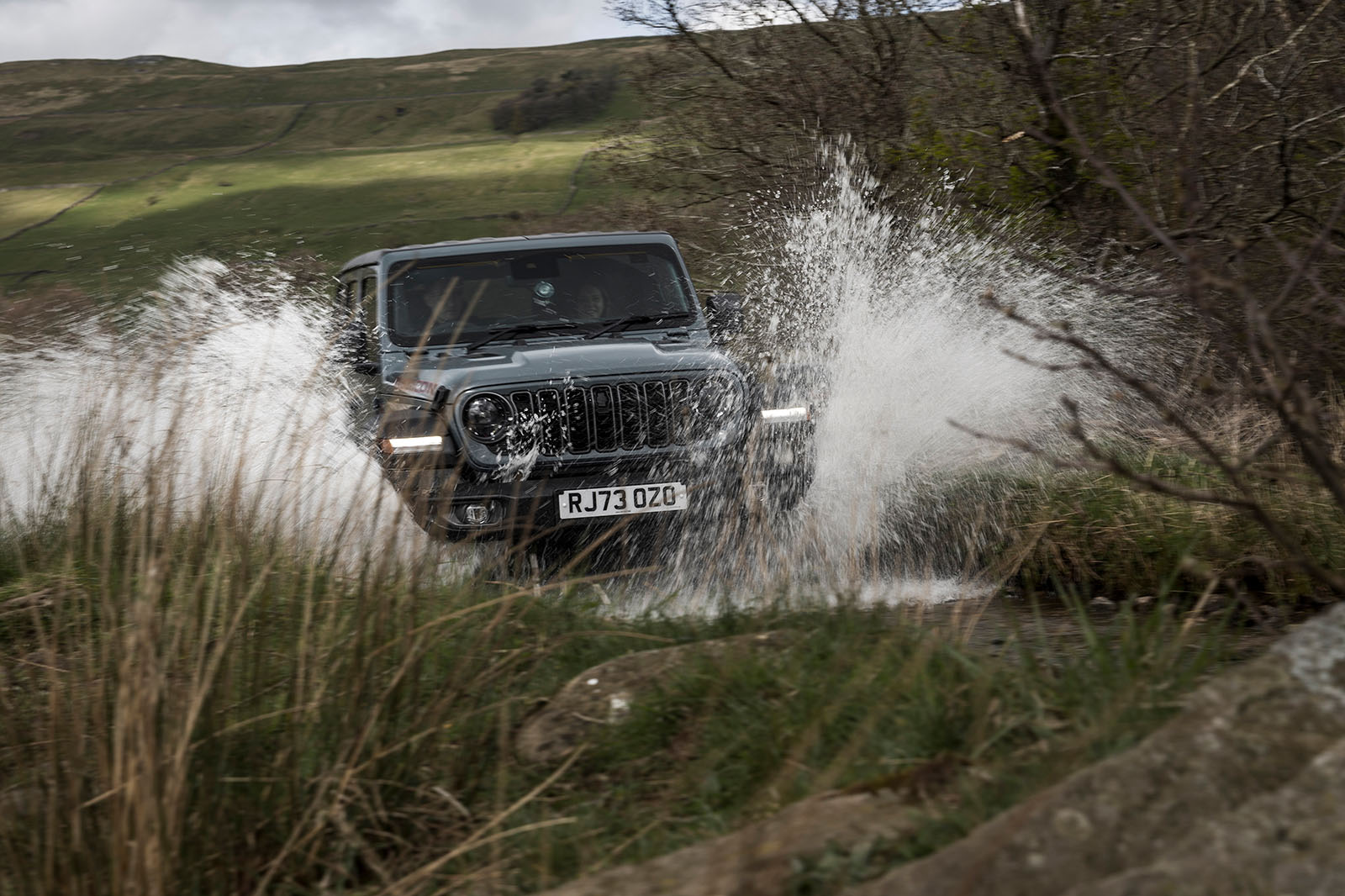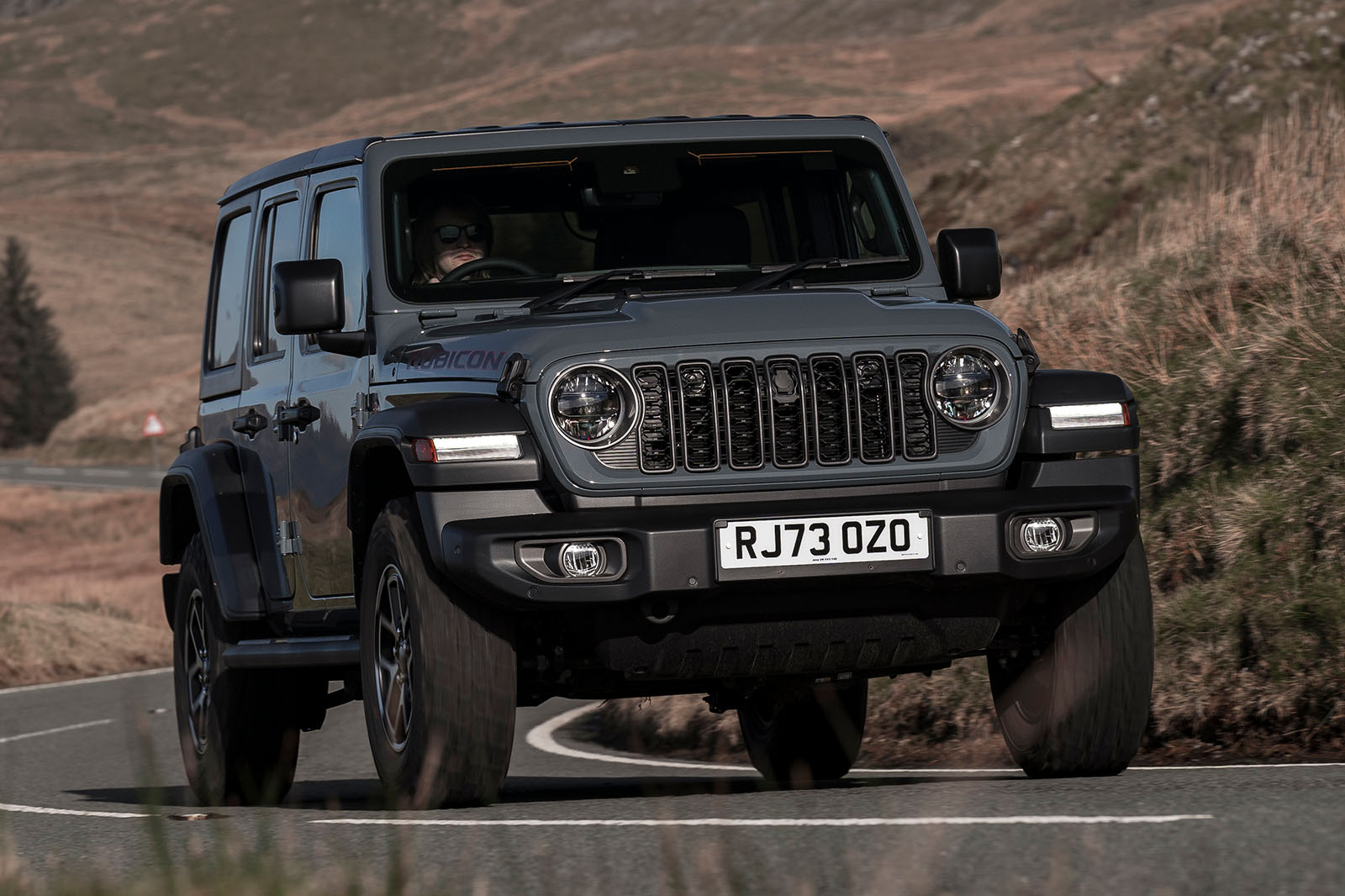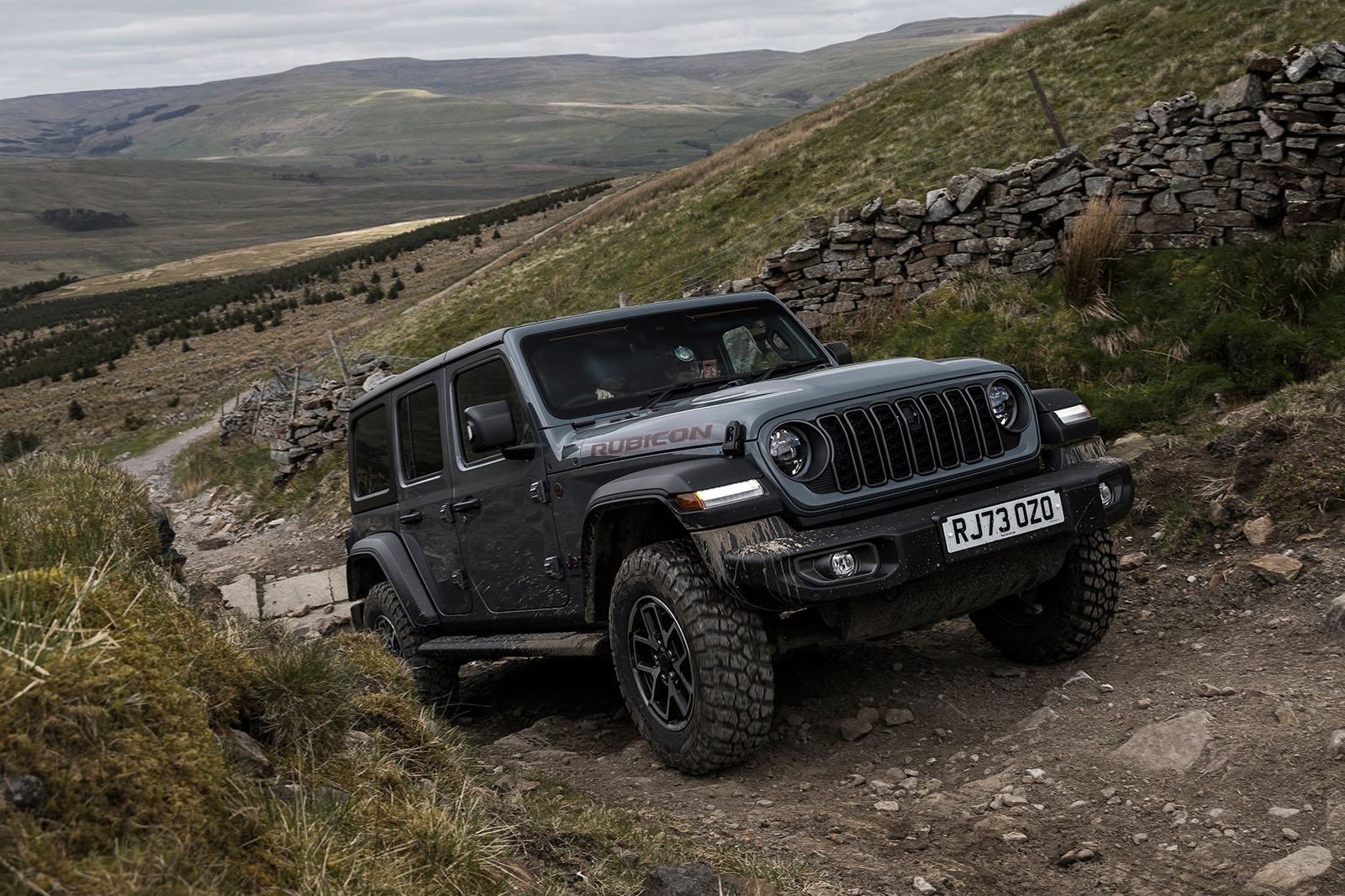Through bends, the Wrangler’s handling manners are entirely predictable: it’s a large car that feels its height and weight; pitches in with plenty of body roll; and has limited front-end grip with which to prevent its bluff nose from wandering progressively into understeer if you hurry it along.
But nearly all of these criticisms are the result of mechanical specification and tuning that lends the Jeep its unflappable off-road ability. The boxy shape provides great visibility; the slow steering means you won’t injure your wrists when clambering over boulders and can make finer course adjustments easily; and those Bridgestone Dueler H/T tyres, while not full-fat off-roading rubber, will get you further from the Tarmac than the standard tyres you’d find on the likes of a normal medium-sized SUV.

Comfort and isolation
The Wrangler rides with a kind of comfort and civility that, while a way from matching what you’ll find in a more typical mid-sized 4x4, could easily see it pass muster as an everyday-use family vehicle.
The suspension cushions bigger lumps and bumps in reasonably well-damped fashion, and while rebound is less cleverly controlled, the car still doesn’t jounce or float too significantly over crests.
Patchier surfaces inevitably shine a spotlight on the propensity of the chassis for animation, but while the busyness and distant lumpiness of the movements of the axles are persistent presences within the car’s driving experience, they never really become overbearing or dominating factors.
Where the Jeep is at it unhappiest, however, is on particularly uneven stretches of country B-road, where non-uniform undulations and inputs that work one side of its axles more than the other bring the worst out of its ride. Here, head toss is particularly prevalent, though still well short of motion-sickness-inducing severity. Elsewhere, the 2.2-litre diesel engine has a tendency to make its voice heard when working hard, while road roar and wind noise are a near constant aural accompaniment to a long-distance cruise.
The latter is the more noticeable, though, largely due to the lack of any substantial sound deadening in the removable roof panels and cabin sealing, which, in general, must necessarily be less effective than in the average SUV.
Our decibel meter measured cabin noise at 70dBA at a 70mph cruise. By comparison, the Land Rover Discovery TDV6 tested in 2017 returned a reading of 67dBA, while the Ineos Grenadier recorded 73dBA.
Off-road notes
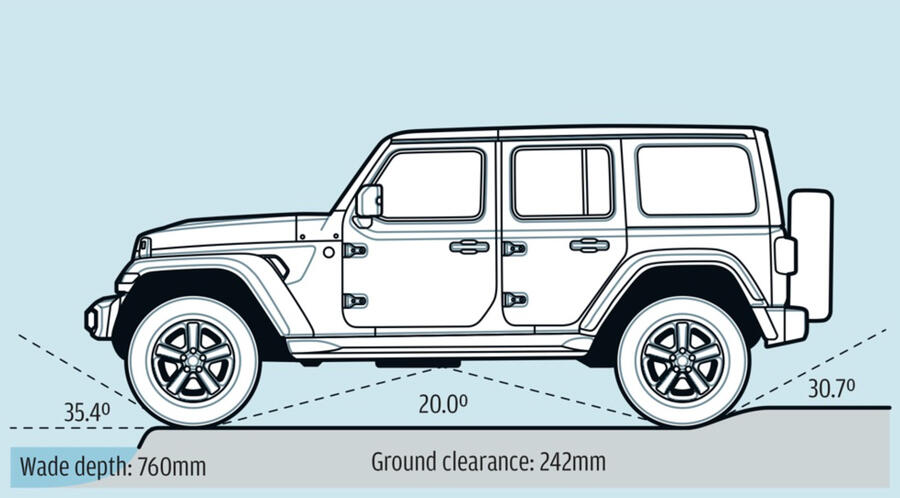
Even if you don’t buy the Wrangler in go-absolutely-anywhere trim, it’s a remarkably capable off-roader. In any guise it beats a Mercedes G-Class and a Toyota Land Cruiser for maximum wading depth and ground clearance, and across the board on clearance angles. A Land Rover Discovery will ford through deeper water and has more ground clearance, but even that can’t match the Jeep’s approach and departure angles.
We didn’t get to test the car at its most rugged (only Rubicon trim gets BF Goodrich Mud-Terrain knobbly tyres, the ultra-low-range ’box, heavy-duty axles, locking front/rear diffs and disconnecting front anti-roll bar), yet were seriously impressed with its capacity to climb steep slopes, crawl over rocks and find traction on slippery surfaces. An accelerator and torque-converter automatic ’box brilliantly tuned for ultra-low-speed control, and some effective traction control electronics, make it go places you’d swear a car simply couldn’t.
Even a Wrangler Sahara can navigate deep troughs and bumpy tracks with apparent ease and clawed its way up steep, slippery paths of loose stones that we’d rather not walk up. You probably need to go to a purpose-built off-road centre to remotely challenge and experience the standard Wrangler's, never mind the Rubicon's, capabilities.



